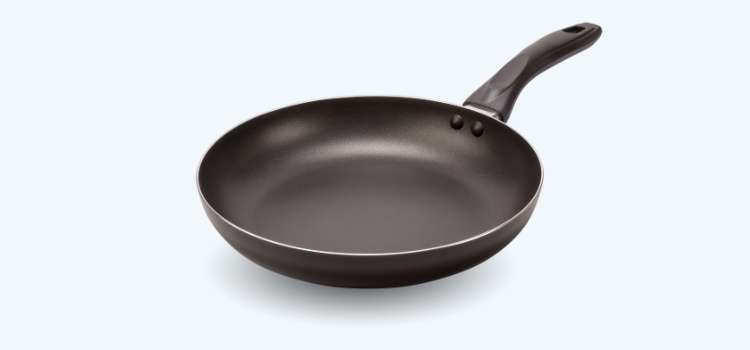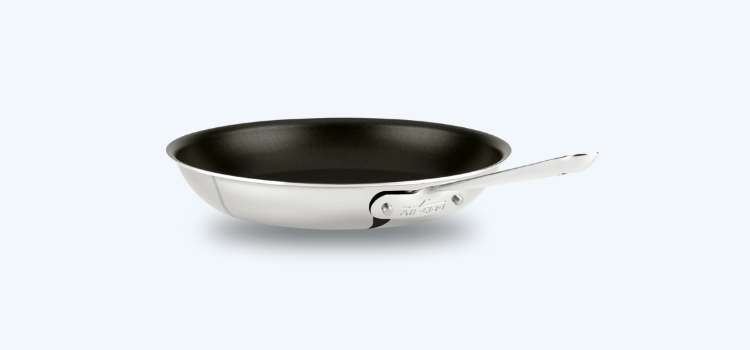As an Amazon Associate, I earn from qualifying purchases

Choosing the right frying pan size might seem trivial, but it can significantly impact your cooking results and overall kitchen experience. A frying pan is a kitchen essential, from whipping up a quick breakfast to preparing a family feast, and the size of your pan can make all the difference.
Whether you’re an aspiring home chef or someone who enjoys the occasional homemade meal, understanding the nuances of frying pan sizes can help you cook more efficiently and achieve the perfect culinary results.
The size of your frying pan affects everything from cooking uniformity to how well you can manage different ingredients simultaneously. A pan that’s too small can overcrowd your food, leading to uneven cooking, while a pan that’s too large might waste energy and be cumbersome to handle. This article will guide you through the considerations for selecting the right frying pan size, ensuring you make a choice that fits your lifestyle and culinary needs.
Factors to Consider
When deciding on the frying pan size that’s right for you, several key factors come into play:
- Cooking Habits: Evaluate what kinds of meals you frequently prepare. If you’re someone who enjoys cooking elaborate dishes with a variety of ingredients, a larger pan might be beneficial. For those who prefer simple, quick meals, a smaller pan could suffice.
- Family Size: Consider how many people you typically cook for. A single person or couple might find a medium-sized pan adequate, while larger families might require a bigger pan to cook meals efficiently.
- Stovetop Compatibility: Ensure that the frying pan size you choose fits comfortably on your stovetop burners. A pan that is too large for your burner can lead to uneven heating and inefficient cooking.
- Storage Space: Consider the storage space available in your kitchen. Larger pans take up more room, so ensure you have the space to store the size you choose conveniently.
- Versatility and Frequency of Use: Think about how often you’ll use the pan and for what purposes. If you need a versatile option for everyday cooking, a medium-sized pan is a great choice.
Common Frying Pan Sizes and Their Uses
Frying pans typically come in a range of sizes, each suited to different cooking tasks:
- Small (8-10 inches): This size is perfect for single servings or small meals. It’s ideal for making omelets, pancakes, or sautéing a small batch of vegetables. A small pan heats quickly and is easy to handle, making it a great option for quick weekday meals.
- Medium (10-12 inches): A medium frying pan is the most versatile and is suitable for a wide variety of dishes. It’s large enough to cook meals for two to four people and can handle everything from frying chicken to making stir-fries. This size is often considered a kitchen staple due to its adaptability.
- Large (12-14 inches and above): Large pans are fantastic for family-sized meals or when cooking in bulk. They allow you to spread ingredients out for even cooking and can accommodate larger cuts of meat or multiple servings of food at once. However, they require more storage space and may be heavier to maneuver.
Tips for Selecting the Right Size

Here are some practical tips to help you choose the right frying pan size for your needs:
- Assess Your Needs: Reflect on your cooking habits and the types of dishes you prepare most frequently. This assessment will guide you in selecting a size that aligns with your culinary preferences.
- Multiple Sizes for Versatility: Consider purchasing pans in multiple sizes. Having a variety of sizes on hand provides flexibility and ensures you’re prepared for any cooking occasion.
- Test for Comfort: If possible, handle the pans in-store to gauge their weight and balance. A pan that’s too heavy or awkward to manage can hinder your cooking experience.
- Think About Cleanup: Larger pans may require more effort to clean. If ease of cleaning is a priority, you may want to avoid excessively large pans unless necessary.
How to Care for Your Frying Pan
Proper care extends the life of your frying pan, ensuring it remains a dependable kitchen tool:
- Cleaning: Always follow the manufacturer’s cleaning instructions. Avoid using harsh abrasives that could damage the surface. Hand washing is often recommended, even for dishwasher-safe models, as it can help maintain the pan’s integrity.
- Utensil Use: Use utensils that are safe for your pan’s surface. Non-stick pans, for example, should be paired with wooden or silicone utensils to prevent scratching.
- Storage: Store your frying pans in a way that prevents scratching or denting. If you stack them, place a protective layer between each pan.
- Heat Management: Avoid overheating your pan, as this can warp the metal and degrade the cooking surface. Gradual heat increases are best for maintaining the pan’s condition.
Conclusion
Choosing the right frying pan size is an important decision that can enhance your cooking experience and improve the quality of your meals. By considering your cooking habits, family size, and kitchen setup, you can select a pan that fits seamlessly into your culinary routine. Investing in a quality frying pan of the right size ensures you have a reliable cooking partner for years to come.
Remember, the key to enjoying your time in the kitchen is having the right tools at your disposal. A well-chosen frying pan can make meal preparation more enjoyable and efficient, allowing you to focus on the creative aspects of cooking. So take the time to assess your needs, explore your options, and make an informed decision that will bring satisfaction and success to your kitchen adventures. Happy cooking!
FAQ
What is the ideal size frying pan?
The ideal frying pan size depends on your cooking habits and family size. For versatility, a medium-sized pan (about 10-12 inches or 24-30 cm) is often best. This size accommodates various dishes, offering a balance between cooking space and efficient heat distribution.
Should I get a 24cm or 28cm frying pan?
Choose a 24cm pan for smaller meals or if you typically cook for one to two people. Opt for a 28cm pan if you need more space for larger dishes or family-sized portions. Consider your stovetop size and cooking preferences when deciding.
Is a 10-inch frying pan big enough?
A 10-inch frying pan is adequate for cooking meals for one to two people and works well for tasks like frying eggs or preparing small sautés. For larger meals or if you frequently cook for more than two, consider a larger pan.
Is a 26cm frying pan big enough?
A 26cm frying pan is typically suitable for cooking meals for two to four people. It’s a versatile size for everyday cooking, offering enough space for a variety of dishes while still being manageable and easy to store.
As an Amazon Associate, I earn from qualifying purchases